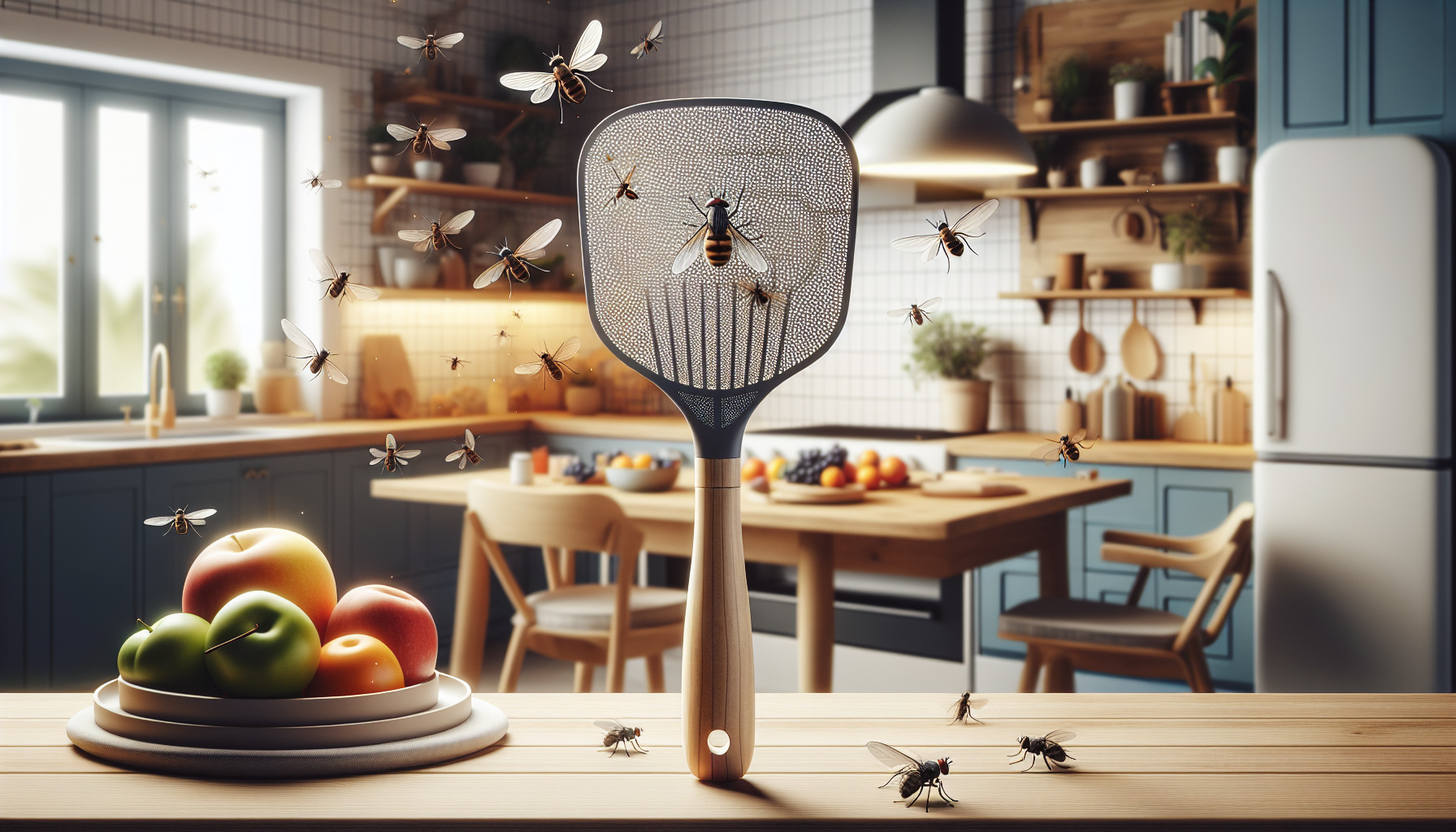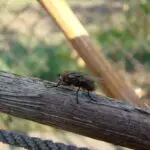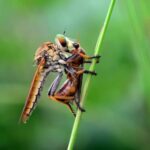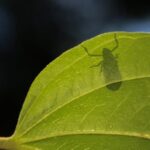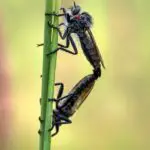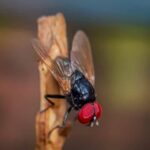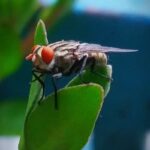How to Eliminate Pesky Flies: Effective Tactics & Tips
Introduction
Welcome to “How to Eliminate Pesky Flies: Effective Tactics & Tips,” where we delve into the aggravating world of fly infestations. Imagine you’re hosting a barbecue for your friends and family. The sun is shining, the grill is sizzling, but there’s an uninvited buzz kill—flies. They’re not just a picnic menace; these winged nuisances can infiltrate your home, buzz around your plants, or even haunt commercial spaces. In this piece, we’ll preview a variety of strategies to help you reclaim your spaces from these pesky intruders.
Flies have a knack for crash-landing onto our food, zipping around our kitchens, and turning our peaceful abodes into frustrating fly zones. But why wait until you’re swatting away at a swarm of flies to take action? The key lies in not just reacting but proactively stopping flies in their flight path. For those curious about preventing future fly invasions, stay tuned as we discuss tips and tricks that can be as simple as improving air circulation to more advanced methods like natural repellents.
If you’re grappling with a current infestation, don’t fret. We’re about to break down an assortment of tactics that are as effective as they are ingenious. From DIY solutions that you can whip up with household items to commercial products designed to tackle the toughest of fly populations, you’ll find a fit for your fly-fighting needs. And yes, we’ll touch on those villainous fruit flies that love to loiter around your ripe bananas!
As you read on, you’ll uncover methods that don’t just mask infestation symptoms but strike at the heart of the issue. By understanding the life cycle and habits of flies, our approach turns the tables and interrupts their pesky patterns. Whether you’re dealing with a solitary buzz or an all-out fly siege, we’ve got the insights and instructions ready for you. So sit tight, and let’s start plotting the end of your fly conundrum!
Understanding Flies and Their Habits
When you think of flies, you might conjure up images of an uninvited guest buzzing around your kitchen. It’s not just the incessant buzzing that’s annoying; these common household pests are masters at making our homes their own. Let’s zoom in on the biology and behavior of these flighty intruders to understand why getting rid of them can feel like an endless game of whack-a-mole.
Flies are like the Houdini of the insect world – they can wriggle their way through the smallest of openings, making air vents a surprising entry point for these winged nuisances. Once inside, they’re not just visiting; they’re looking to set up shop. Flies are attracted to any form of sustenance they can find, whether it’s your pet’s food bowl, the fruit bowl on your counter, or the sticky spill on your dining room floor.
Understanding their lifecycle is crucial for effective fly management. These insects can mature from eggs to adults in as little as a week, and during their brief lifespan, they’re extraordinarily prolific. A single female can lay hundreds of eggs, which hatch into maggots capable of squirming into every nook and cranny imaginable. Imagine the surprise and disgust of finding a writhing mass of maggots where you least expect them – yes, these real-life horror stories are the doing of our not-so-friendly houseflies.
Moreover, flies are not just a nuisance; they’re a health risk. They visit all kinds of unsavory places, from trash bins to animal waste, and in doing so, pick up a buffet of pathogens. These microorganisms hitch a ride on the flies’ bodies, only to be deposited on your next meal. It’s a fact as unsettling as the thought of flies tap-dancing across your sandwiches at a picnic.

The key to outsmarting flies lies in understanding their attraction to our homes. They crave moisture, warmth, and food – the very same comforts that we do. However, they also bring along unwanted germs, creating an unequivocal motive to keep them out. The stage is set for a battle of wits: our quest to maintain a fly-free abode against their incessant quest to invade our personal space.
Stay on top of housekeeping to send a clear message to these persistent pests. The crumbs from your morning toast or the aroma of ripening bananas can be all it takes to roll out the red carpet for flies. Tightly sealed containers and diligent cleanliness can break the cycle of infestation, giving you the upper hand in this household tug-of-war.
Preventive Measures to Avoid Fly Infestations
No one enjoys the incessant buzzing and unwanted company of flies. Believe it or not, the key to keeping these pesky pests at bay is quite simple and aligns with your daily routine – anticipation and prevention. Let’s unpack some real-life tactics to stop flies from crashing your home sweet home.
Keep It Clean, Keep It Fly-Free
Good hygiene is about more than just fresh scents and sparkling countertops. It’s your first line of defense against an invasion of winged nuisances. Remember the time when a single forgotten garbage bag in the garage turned into a buzzing fly disco? That’s a classic example of how important proper sanitation practices are! Always secure trash bags and bins. If they’re outside, make sure they’re tucked away from doors and windows – you don’t want to provide a freeway for flies straight into your abode.
Regularly cleaning areas that might collect food debris like kitchen counters and dining tables can significantly reduce the odds of attracting flies. Consider implementing a ‘no dishes in the sink overnight’ rule. Your morning self will thank you, and so will your fly-free kitchen.
Seal the Deal with Your Food
Flies are like uninvited guests that come over just for the food. Remember to store perishables in sealed containers or the refrigerator. No fruit bowl left uncovered, no cookie jar without its lid. It’s just like ensuring your camping food is tucked away from wildlife – except the wildlife, in this case, is tiny and loves to hover over your kitchen counter.
Preventative Repairs Go a Long Way
A crack or a gap in the windows might not seem like much to you, but it’s a VIP entrance for a fly. Take the time to inspect and repair any openings in your house’s exterior. One of our readers shared a story where a forgotten hole in a window screen turned her quiet Sunday breakfast into a swatting marathon. A quick patch job can make all the difference!
A Little External Wisdom on Fly Infestations
If you’re on the hunt for more preventative measures, there’s a plethora of tips out there, like this guide, that delve into the nitty-gritty of keeping flies at bay.
And lastly, keeping your garden or balcony in check can also discourage flies from lounging around your home. Overgrown shrubs and stagnant water can transform your serene garden into a fly magnet.
For those visually inclined, this helpful video elaborates on some practical tips for defeating those annoying flies:
Embark on these preventive measures and you’ll notice the absence of unwanted fly squadrons. Maintain those sanitation practices, secure your banquet from the buzzing intruders, and mind the gaps in your home’s armor. It’s time to reclaim your peaceful, fly-free space!
Natural Remedies to Keep Flies at Bay
Are you ready to un-invite those annoying flies buzzing around your home without resorting to harsh chemicals? Lucky for you, Mother Nature’s pantry is stocked full of herbal repellents, essential oils, and plants that are offensive to flies but delightful for our senses. Let’s delve into the world of natural fly deterrents that promise a peaceful, eco-friendly abode.
Imagine you’re preparing a garden salad and there’s not a fly in sight. How, you ask? Well, certain herbal repellents are flies’ worst enemies. For instance, basil – the same herb that adds a punch to your pesto – can be potted around your home as a fragrant fly-repelling force field. Mint, with its invigorating aroma, can also send flies packing. Simply place a few pots around the house or plant them in the garden, making sure to give them a good rub every now and then to release their essential oils into the air.
If pungent plants are your thing, then you’ll love the idea of essential oils. Lemongrass, lavender, and eucalyptus oils are not just for that spa-like atmosphere; they double as fly-rejecting warriors. Dabbing a few drops onto ribbons and hanging them near windows, or using an oil diffuser, can create a fly-free zone. Plus, these oils come with the added bonus of a home that smells like a tranquil retreat.

And let’s not forget about the mighty power of plants that repel flies. Did you know that the charming lavender plant that lulls you to sleep can also keep flies at bay? Similarly, marigolds not only add a splash of color to your garden but are also natural pest control agents. Including these in your green space can lead to a serene and fly-free environment.
On a side note, while you’re embracing these natural remedies, why not explore more eco-friendly pest control strategies? It’s about creating a harmonious space that respects both your health and the ecosystem.
Each of these methods offers a health-conscious option for those who prefer to stay clear of synthetic repellents. What’s better than a solution that keeps flies away and is kind to the Earth? By incorporating these natural fly repellents, you’re partaking in an ancient practice of using the earth’s bounty for protection — ushering in an era of insect-free tranquility without a chemical in sight.
DIY Fly Control Solutions
Nothing ruins a sunny day like a squadron of relentless flies. But before you reach for that chemical fly spray, why not try some crafty DIY solutions that are both gentle on the environment and your wallet? Let’s roll up our sleeves and get into the nitty-gritty of homemade fly defense!
Sticky Fly Strips: Your First Line of Defense
Remember the old-school sticky tape that grandma used to hang in the kitchen? That’s your inspiration. To create your own, you’ll need nothing more than some thick paper or cardboard, corn syrup, and a dash of granulated sugar. Mix the syrup and sugar, apply it to the paper, and hang these sweet traps around your home. Flies will be lured in by the scent and find themselves in a sticky situation they can’t escape from.
Apple Cider Vinegar Trap: Flies’ Fatal Attraction
Combine apple cider vinegar with a few drops of dish soap. The fruity aroma entices the flies, while the dish soap reduces the surface tension, ensuring that once the flies touch the liquid, they won’t be flying away. Pop it in a jar, cover it with cling film pierced with small holes, and watch as flies flock to their unexpected doom.
Here’s an example of how effective this can be: Imagine you’re enjoying a backyard BBQ with friends. You notice flies buzzing around, so you set up a few of these traps around your patio. Within minutes, the flies divert their attention to the traps, allowing you and your guests to enjoy your burgers in peace.
Herbal Repellents: Nature’s Fly Deterrents
Certain herbs are like kryptonite to flies. Lavender, basil, and mint not only smell great to us but are abhorred by our flying foes. Plant them in small pots around your home or crush their leaves to release the oils, and create a natural barrier that repels flies with an aroma that’s pleasant for humans but off-putting to insects.
Picture this: it’s a lazy Sunday afternoon, and you’ve thrown open your windows to let in the breeze. Instead of inviting in a barrage of flies, the scent of mint and basil drifting through the air acts like an invisible shield, keeping those pesky pests at bay.

With these DIY tips, you can keep your home a no-fly zone while enjoying the satisfaction of outsmarting these pesky intruders using simple household items. It’s a win-win for you and Mother Nature!
Commercial Fly Traps and Repellents
When you’re engaged in battle against an armada of buzzing invaders, you’ve got to bring out the big guns. Simply swatting around won’t do; you need a well-structured strategy to get rid of flies for good. Let’s talk tactics and explore the fantastic world of commercial fly traps and repellents. These products pack a punch and provide you with the tools necessary to declare victory over these pesky pests.
Imagine you’re sitting down to a lovely outdoor dinner, and just as you’re about to take that first bite, you’re dive-bombed by a squadron of flies. Not on my watch! Enter the arsenal of chemical fly traps: from sticky strips that hang like streamers at a surprise party to electric zappers that light up the night with each victorious zap. These traps are the mercenaries in your fight, offering swift and often immediate results. What’s the catch? Well, some might have concerns over the use of chemicals around food or within a family environment, fearing unwanted collateral damage.
The Non-Chemical Brigade
Then there’s the non-chemical platoon, standing proud with eco-friendly badges and often clever designs that outsmart flies rather than overpowering them. Picture a solar-powered light that lures flies to a discreet trap. No buzz, no fuss, and most importantly, no toxic substances. These green warriors might work more slowly, but they’re often the choice for those thinking of the long-term environmental impact and seeking a more harmonious way to coexist with nature while still keeping flies at bay.
Whatever your stance on the battlefield of fly control, the key is to assess each option like a shrewd general. Consider the area you want to protect, the size of your fly problem, and, quite importantly, your personal comfort with chemical warfare. Are you the hit-’em-hard-and-fast type, or do you prefer a tactical, strategic approach that might take a little longer but blends seamlessly into your environment? The best plan of attack is the one that suits your scenario and keeps your home a no-fly zone.

Real-life examples of this varied approach to fly combat abound. Next-door Nancy might swear by her UV light trap that keeps her patio pristine, while down-the-street Dave opts for the tried-and-true method of hanging sticky traps in his barn. Whether it’s the latest in tech or a solution that’s stood the test of time, finding the right fit for your fly dilemma is critical. And remember, always follow the manufacturer’s guidelines to ensure you’re both safe and effective on the front lines against these aerial assailants.
Techniques for Handling a Severe Fly Infestation
If you’re dealing with a heavy fly infestation, it can feel like a battle you’re not equipped to win. Flies aren’t just annoying; they pose a health risk, carrying a smorgasbord of diseases right onto your kitchen counter. Don’t fret, though—there are advanced strategies to reclaim your space and sanity.
Identifying the Source of the Problem
First things first, identify where these pesky invaders are breeding. Flies love garbage, pet waste, and decaying organic matter. It’s like a five-star hotel for them. Make sure to keep your trash sealed and disposed of regularly. Hunt down that forgotten piece of fruit lurking behind the sofa, and bid it goodbye. Removing the breeding grounds can drastically reduce the fly population.
DIY Traps and Natural Deterrents
There’s a plethora of DIY fly trap designs ready for you to test. Some use sweet bait like sugar water, while others lure them in with vinegar and dish soap. Position these traps where flies are most active and watch the bodies pile up. For a non-lethal approach, certain herbs like basil and lavender double as fly repellents and add a pleasant aroma to your home.
Professional Intervention
Sometimes, the invasion is just too overwhelming. When flies have turned your home into a buzzing circus, and you’ve tried all the tricks in your arsenal, it’s time to call in the cavalry. Professional pest controllers come armed with potent insecticides and the knowledge to use them effectively. They’ll target not just the adult flies but also the larvae, ensuring that your fly problem is nipped in the bud.
Case in point: imagine a friend’s barbeque party turning into a fly-fiesta. They tried the usual sprays and traps, but the swarm just grew thicker. Finally, after a professional treatment, their backyard was transformed back into the chill haven it once was, devoid of the uninvited winged guests.
Engaging a professional isn’t admitting defeat; it’s about being smart with your time and resources. Sometimes, your sanity is worth the call.
Cleaning and Maintenance to Prevent Future Infestations
Let’s cut to the chase—flies are a nuisance, and like uninvited guests, they seem to show up when you least expect them. Keeping them at bay isn’t just about reacting swiftly; it’s about setting the stage so they’d rather RSVP ‘no’ to your home gala! The secret lies in routine cleaning and maintenance, a regimen that ensures your house is more fortress, less free-for-all buffet for these pesky winged invaders.
Imagine your kitchen, not a single dirty dish in sight, and the countertops so spotless they gleam. It’s not just for aesthetics—flies are all about easy access to food. So every crumb you sweep, every spill you wipe, you’re essentially rolling up the welcome mat. Take it from a friend who learned the hard way: a pie left cooling on the sill is like setting up a neon ‘vacancy’ sign on a fly motel!
Speaking of hotels, ever noticed how the most fastidious ones are the least buggy? That’s no coincidence. Regular trash disposal and tightly sealed lids can make the difference between an all-you-can-eat buffet and a disappointing ‘closed’ sign for flies. The same goes for your home. Ensuring your garbage is not just out of sight but properly contained is your frontline defense in this mini-battle against the bugs.
When it comes to the great outdoors, your yard could be party central without proper upkeep. Standing water is the equivalent of a swanky pool party for flies. So, keeping gutters clean and fixing leaky outdoor faucets can save you a lot of wing-flapping headaches. Trust me, seeing your neighbor’s yard swarming with flies while yours remains clear? That’s a win.
The battle for a fly-free home is ongoing. It’s about creating habits that build up an invisible barrier, one that’s less welcome mat and more “keep out” sign. To give you a headstart, let’s take a look at some actionable tips in the form of a helpful video. It’s packed with insights tailored to keep those unwelcome guests out for good.
{video}
Now, with a clean, well-maintained home and the arsenal of knowledge you’ve just armed yourself with, you’re ready to declare your living space a no-fly zone. Remember, consistency is key—a little effort each day keeps the flies away!
Myths vs. Reality: What Works in Fly Control
When it comes to eliminating flies, the line between fact and folklore can be as thin as a fly’s wing. It’s time to sweep away the cobwebs of misconceptions and zoom in on what science tells us about fly control. Let’s clear the air and tackle some of the most popular myths, revealing the truth about how to effectively get rid of flies.
Myth: Ultraviolet Bug Zappers are the Best Fly Control Method
It’s a common sight in many backyards: the blue glow of an ultraviolet bug zapper promising a fly-free zone. Despite their popularity, studies have shown that these devices are better at attracting and killing beneficial or harmless insects rather than the intended pesky flies. In fact, less than 0.22% of the insects killed by these zappers are houseflies. So, zapping may not be the solution after all.
Reality: Screen Your Windows and Maintain Cleanliness
The true fly fighters are window screens and cleanliness. Mesh screens can effectively keep flies at bay, provided they are intact and without gaps. Additionally, maintaining a clean environment, especially disposing of garbage regularly and storing food correctly, can significantly deter flies. After all, a fly’s dream home is made of leftovers and trash!
Myth: Citronella Candles Can Keep Flies Away
While citronella candles are a popular choice to ward off mosquitoes, flies don’t seem to read the same memo. The effectiveness of citronella against flies is largely anecdotal, and there’s limited scientific evidence to back up these claims. Flies may not RSVP to your garden party just because of a few citronella candles.
Reality: Use Fly Traps and Natural Deterrents
To truly tackle the fly-fest, consider using fly traps. From sticky ribbons to baited traps, these devices can reduce the number of adult flies. Natural deterrents, such as essential oils like eucalyptus and peppermint, have shown some potential in repelling flies and making your home less attractive to these winged invaders.
Myth: Homemade Remedies are Ineffective
Many people turn up their noses at the idea of homemade fly control methods. But before you dismiss granny’s blend of spices and sprays, let’s consider the evidence. Real-life examples have proven that certain homemade concoctions can indeed keep the flies at bay. Solutions involving vinegar, wine, or dish soap have been surprising heroes in many households.
Reality: Combine Tactics for Best Results
While no single method can guarantee a fly-free existence, combining tactics is your best bet. Keeping your surroundings clean, storing food properly, incorporating traps, and using homemade remedies can create a multi-layered defense. This combination can help reduce fly populations and reclaim your space from these airborne nuisances.
Now that we’ve navigated through the maze of myths and realities, take a look at this handy video demonstrating some effective methods to get rid of flies:
Remember, when it comes to flies, it’s not just about swatting at the problem. It’s about understanding what really works so you can enjoy your space in peace.
Conclusion: Winning the Battle Against Flies
Throughout our detailed journey in “How to Eliminate Pesky Flies: Effective Tactics & Tips,” we’ve tackled the gritty details of turning your home into a fortress against these winged nuisances. Armed with the knowledge of how to avoid attracting flies and the best methods to send them packing, it’s time to apply these strategies and restore tranquility to your space.
Remember, flies are more than just irritants; they’re potential carriers of pathogens that can affect your health and well-being. Maintaining cleanliness and minimizing the allure of your home as a fly haven is not a one-off endeavor but a continuous commitment. It’s similar to keeping a garden – regular care keeps the pests away. By being proactive and regular with waste disposal, using screens on windows, and employing fly traps, you’ll not only curb the current fly population but also prevent future swarms from settling in.
Now, let’s not forget the power of real-life examples: think of the neighbor whose picnics are never interrupted by flies. It’s not magic; it’s simply the execution of these same strategies that keep their outdoor gatherings enjoyable. By following these tips, your next barbecue could be just as fly-free.
Implementing these tips doesn’t have to be a solo mission. Consolidate efforts with friends and neighbors to create a community that’s less inviting to flies. A collective effort can yield impressive results and foster a healthier environment for everyone.
Before we wrap up, take a moment to watch this practical video guide on creative ways to get rid of flies. Seeing these tips in action will give you the confidence to tackle your fly concerns head-on.
Victory over vexing vermin is well within reach when you’re informed and ready to take action. So, go forth with the knowledge you’ve gained, and create that serene, fly-free environment you deserve. Buzzing invaders be gone!
Frequently Asked Questions
Got a swarm of winged woes? You’re not alone—flies are a universal nuisance. Let’s dive into the buzz and suss out some answers to keep these pesky intruders at bay.
What Attracts Flies to My Home?
Flies are like guests who overstay their welcome—they’re drawn to the scent of your cooking, trash, or even your pet’s food dish. Remember that barbecue last weekend where Uncle Joe dropped a hotdog behind the grill? Yep, that’s a VIP invitation for flies. Keep things clean, and you’ll be much less appealing to these airborne annoyances.
Can I Use Natural Remedies to Get Rid of Flies?
Absolutely, for those who fancy themselves as kitchen alchemists, concocting a potion of apple cider vinegar and dish soap can be a non-toxic ticket to a fly-free zone. Don’t forget plants like basil and lavender, which are like kryptonite to flies. Keep pots of these around your home, and you’ll have a fragrant force field in no time.
Are Fly Traps Effective?
Picture this: a sunny summer day, a glass of lemonade, and the silent satisfaction of a fly trap working overtime in the corner. These sticky saviors are a frontline defense in your war against the winged invaders. From ribbons to light traps, there’s a range to fit your need and aesthetic.
How Often Should I Clean to Keep Flies Away?
Take a cue from the perpetually pristine: frequent cleaning can make your home a no-fly zone (pun intended). A daily sweep of surfaces where crumbs and spills are common, and a weekly deep clean of trash receptacles will put you in good stead. After all, tidiness is the archenemy of the common housefly.
Can Flies Be a Sign of a Bigger Problem?
If you’re noticing more flies than you could explain with a Sherlock Holmes style inquiry, it might be time to play detective. An abundance of flies can sometimes indicate more serious issues, like decay hidden within your walls or beneath your home. Don’t just treat the symptoms—get to the root of the problem!
Now that you’ve gotten the buzz on banishing flies, take these tips to heart and reclaim your space. If all else fails, remember: a fly swatter never goes out of style.
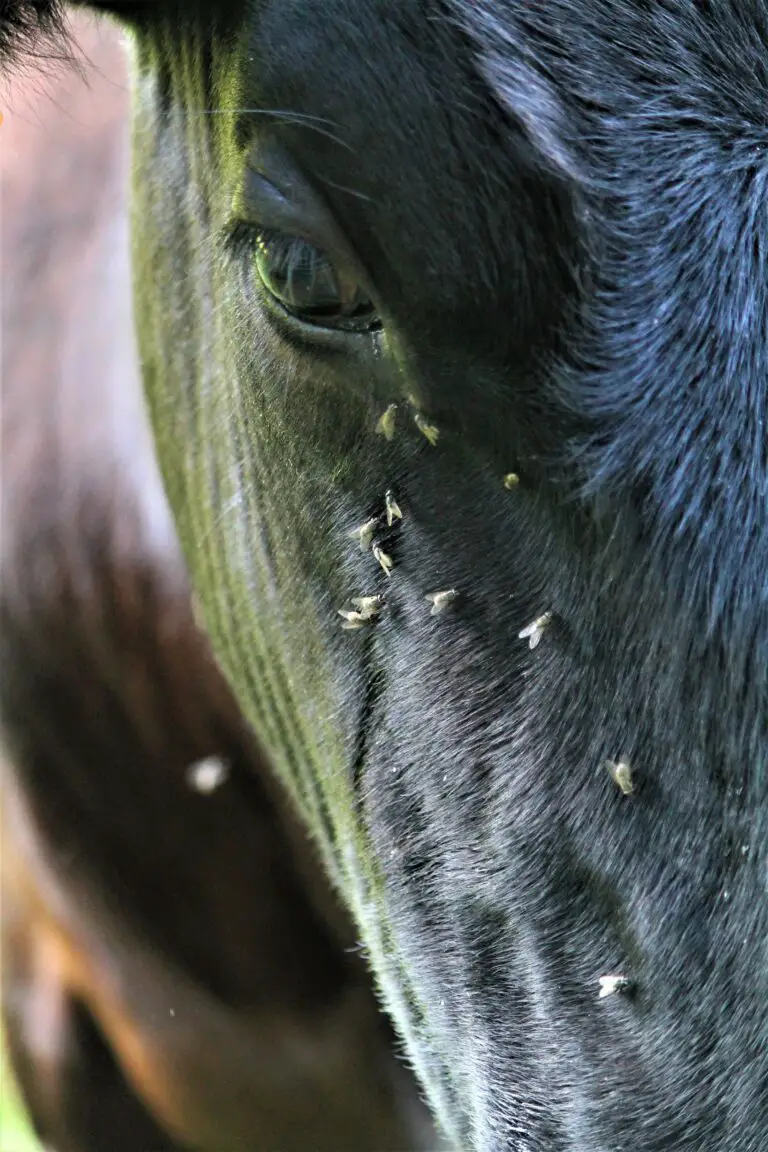
Are Electronic Fly Zappers Effective in Controlling Fly Populations?
When it comes to the battle against buzzing invaders in our homes and workplaces, electronic fly zappers have become an arsenal of choice for many. But just how effective are these high-tech insect terminators? The truth is, electronic fly zappers, with their alluring ultraviolet light and satisfying zap, can be a potent weapon in certain scenarios.
Imagine a warm summer evening, with flies intrusively exploring every corner of your kitchen. An electronic fly zapper, strategically placed, begins to work its magic—flies attracted to its glow find a quick and electrifying end. But are these incidents isolated victories or part of a larger triumph against the pesky fly populations?
Studies suggest that electronic fly zappers are most effective in enclosed, controlled environments. The lights attract flies within a set perimeter, ensuring that those that enter don’t leave. Picture a food processing plant where hygiene is paramount or a restaurant where diners demand a fly-free zone. In these settings, the zappers not only provide a line of defense but also serve as a monitoring tool for fly activity levels.
However, it’s important to note that while electronic zappers are proficient in catching and killing flies, they’re not a silver bullet. They work best in conjunction with other methods like proper sanitation, which addresses the root of the fly problem—eliminating breeding sites and food sources. Without addressing these factors, you’re merely skimming the surface of the fly invasion.

What’s more, the placement of these zappers is key. Positioning them too close to food areas can be counterproductive, as the exploding insects may scatter unwanted debris onto surfaces below. A thoughtful arrangement, away from food prep areas but close enough to intercept incoming flies, will maximize efficacy.
It’s clear that electronic fly zappers can be a cog in the machine of fly control, especially when the aim is to keep them away from specific zones. By tackling the issue with a multi-faceted strategy and weighing in on where these zappers are most beneficial, you can turn the tide in the fight against flies.
Can flies become immune to repellents over time?
The ongoing battle against flies often seems like a never-ending war. Just when you think you’ve got them licked, they’re back with a vengeance. And it’s not just your imagination; these pesky insects may actually be developing resistance to the very repellents you’re using. It’s the insect version of an arms race, and the question is: can we outsmart these little buzzers?

Consider the case of the common housefly. Over time, they’ve been exposed to a flurry of chemicals and natural deterrents, and much like bacteria evolve when faced with antibiotics, flies can also undergo adaptations. This means the sprays and traps that once sent them packing may not cut it anymore. It’s a concerning development, especially when you imagine a summer without the sweet relief of a fly-free kitchen.
Adapting Strategies to Overcome Resistance
So, what’s a frazzled homeowner to do? Throw in the towel? Never! The key is to stay one step ahead. Rotating repellents and integrating multiple control methods can help prevent flies from getting too cozy with any one solution. Think of it as keeping the flies on their toes—or rather, their six feet. And let’s not forget the power of prevention; proper sanitation can drastically reduce fly populations, making your repellent arsenal all the more effective.
It’s a crispy Saturday afternoon barbecue, and the last thing you want is flies gatecrashing the party. Jim next door thought he had it to a tee with his electric fly swatter—zap, sizzle, another one bites the dust. But three summers in, and it’s as if the flies have started to wear tiny rubber boots. They’re not going down without a fight. It’s clear that relying on a single line of defense is a risky strategy.
Instead, consider combining physical traps with biological allies like parasitic wasps, which lay their eggs inside fly pupae. Yes, it sounds like a horror movie subplot, but it’s nature’s way of keeping things balanced. And for those wary of chemicals, exploring natural repellents such as citronella, eucalyptus, and clove oil might not just repel flies but also win you points with Mother Nature.
Ultimately, the rise of resistant flies is a call to action. By diversifying our approach and staying informed about the latest in fly control, we can reclaim our spaces from these uninvited guests. And who knows, maybe one day, instead of buzzing around your kitchen, the only flies you’ll see will be those sunbathing on the window sill, unable to muster the strength to dodge your swatter.
What Are the Health Risks Associated With Fly Infestations?
Have you ever wondered why your mother was so adamant about shooing flies away from the dinner table? It turns out she had every reason to be concerned. House flies are not just a buzzing nuisance; they’re notorious for carrying a variety of diseases that pose significant health risks to you and your family.
Imagine this: flies flitting from garbage dumps to your kitchen countertop, from pet waste to your dining table. This is no exaggerated horror story; it’s a day-to-day reality. Flies can’t chew solid food; they spit out saliva onto solid food to pre-digest it and then suck it back in. If that food happens to be in your home, it means they’re depositing pathogens right where you eat and prepare meals.

The fact is, flies are vectors for some pretty nasty germs including E. coli, Salmonella, and even parasites like the ones causing giardiasis. These germs can cause illness ranging from food poisoning to more severe conditions like dysentery. This isn’t fear-mongering; these are the invisible risks that make fly infestations a serious concern.
Consider a fly landing on an uncovered food dish during your summer outdoor barbecue. It’s not just taking a leisure stroll; it’s likely leaving behind a trail of bacteria that can ruin your gathering with a nasty bout of stomach cramps or diarrhoea. This is why keeping flies at bay is paramount.
So, how can you ensure your home is not a fly-friendly zone? One effective measure is to maintain strict hygiene standards. Regularly remove trash and make sure your food is covered. However, it’s not just about cleanliness; some proactive measures like installing fine mesh screens on windows can make a world of difference in keeping those winged critters out of your home and off your plate.
It’s clear that the adage “prevention is better than cure” rings especially true when it comes to flies. By taking steps to prevent fly infestations, you’re also safeguarding your family against potential health risks. Don’t let these unwelcome guests dictate your family’s wellbeing—take control and keep flies out for good!
How can I get rid of flies without harming my pets?
If you’re a pet owner, flies are more than just a nuisance; they can pose a health risk to your furry friends. But don’t fret! There’s a bevy of strategies to handle these persistent pests while keeping your beloved pets safe. Let’s dive into some pet-friendly tactics that can help you maintain a fly-free home.

First things first: Cleanliness is the front line of defense. Regularly dispose of pet waste and keep feeding areas spick and span to avoid giving flies an open invitation. Flies are attracted to food and waste, so limiting access to these hotspots is crucial.
Consider introducing plants that repel flies naturally, like basil, lavender, or marigold—these are not only effective but also add a touch of greenery to your space. You’ll want to ensure these are safe for pets, as some plants can be harmful if ingested.
Another savvy solution is the use of fly traps that utilize non-toxic baits. These devices can capture flies without the use of harmful chemicals and are strategic for indoor and outdoor use. You might have seen light traps or adhesive strips, which can also be quite effective if placed out of paws’ reach.
Ever heard of the saying ‘fight fire with fire’? In this case, we’re talking about introducing beneficial insects—like nematodes that target fly larvae before they can hatch. It sounds a bit sci-fi, but it’s a natural method that helps keep the population in check.
When it comes to fly swatters, opt for the electric ones. Not only do they deliver a satisfying ‘zap’ when you hit the target, but they also prevent the use of sprays that could inadvertently affect your pets’ well-being.
Lastly, some pet owners swear by homemade concoctions like a mixture of apple cider vinegar and dish soap. Flies can’t resist the scent, and the soap traps them for good. Just be sure these mixtures are placed where pets can’t access them to prevent any mishaps.
All these approaches emphasize safeguarding your pets while keeping flies at bay. Be proactive, keep exploring safe options, and soon you’ll find that your living space is no longer a fly zone!
